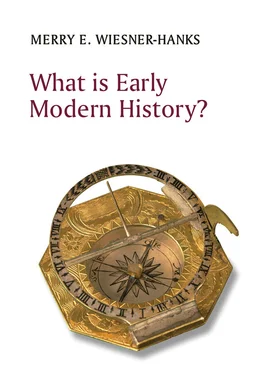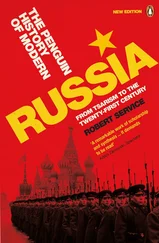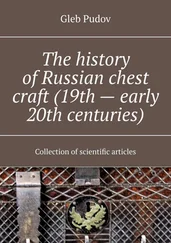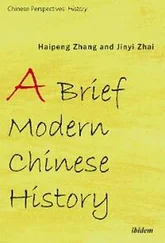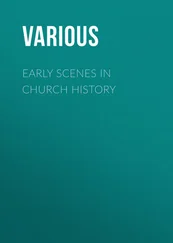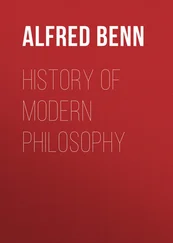Merry E. Wiesner-Hanks - What is Early Modern History?
Здесь есть возможность читать онлайн «Merry E. Wiesner-Hanks - What is Early Modern History?» — ознакомительный отрывок электронной книги совершенно бесплатно, а после прочтения отрывка купить полную версию. В некоторых случаях можно слушать аудио, скачать через торрент в формате fb2 и присутствует краткое содержание. Жанр: unrecognised, на английском языке. Описание произведения, (предисловие) а так же отзывы посетителей доступны на портале библиотеки ЛибКат.
- Название:What is Early Modern History?
- Автор:
- Жанр:
- Год:неизвестен
- ISBN:нет данных
- Рейтинг книги:5 / 5. Голосов: 1
-
Избранное:Добавить в избранное
- Отзывы:
-
Ваша оценка:
- 100
- 1
- 2
- 3
- 4
- 5
What is Early Modern History?: краткое содержание, описание и аннотация
Предлагаем к чтению аннотацию, описание, краткое содержание или предисловие (зависит от того, что написал сам автор книги «What is Early Modern History?»). Если вы не нашли необходимую информацию о книге — напишите в комментариях, мы постараемся отыскать её.
What is Early Modern History?
What is Early Modern History? — читать онлайн ознакомительный отрывок
Ниже представлен текст книги, разбитый по страницам. Система сохранения места последней прочитанной страницы, позволяет с удобством читать онлайн бесплатно книгу «What is Early Modern History?», без необходимости каждый раз заново искать на чём Вы остановились. Поставьте закладку, и сможете в любой момент перейти на страницу, на которой закончили чтение.
Интервал:
Закладка:
Aims and structure of the book
Despite these critiques, “early modern” seems here to stay, as a handy through problematic term. The aim of this book is thus to sort out the early modern muddle, and introduce key topics and theories in the field as these have emerged over the last several decades. The book surveys various subfields of history, discussing the marks of modernity that have traditionally been seen as emerging in them, and ways in which they have been questioned, nuanced, and rethought. As you explore the concept of modernity, you will also gain a sense of broader issues and concerns in early modern studies, how these have changed, and how they relate to developments within history as a discipline.
Because “early modern” began as a concept in economic history, Chapter 1surveys economic and social history of the era, including Marxist historiography, quantitative analyses, debates about how and why capitalism and industrialization emerged, studies of consumption, the Annales school, historical demography, and family history, as well as the history of the body, medicine and health, the emotions, and the senses. Chapter 2discusses scholarship on the religious, intellectual, and cultural movements that have long been viewed as central to the West’s modernizing trajectory, including the Reformation, the Scientific Revolution, and the Enlightenment, and highlights history’s material and linguistic/cultural turns. Chapter 3focuses on women’s, gender, and sexuality studies, incorporating key directions in literary studies, art history, and queer theory to discuss scholarship on women’s ideas and actions, debates about female rule and gender difference, notions of masculinity, and the emergence of “modern” sexuality.
Moving beyond Europe, Chapter 4examines the growth of the Atlantic world as a unit of study, surveying changing views of exploration and the Columbian Exchange, slavery and the slave trade, cultural blending in religious and marital practices, and the development of racial hierarchies. Bringing politics into the story, the chapter discusses trends in the analysis of nation-states, nationalism, empires, and the Atlantic revolutions – American, French, and Haitian. Chapter 5widens the scope further still, surveying work that explores topics increasingly being investigated on a global scale: how goods, people, and ideas moved around the world, the relationship between warfare and the expansion of states and empires, and the impact of environmental change, especially the Little Ice Age, along with the broader intersection between humans and the natural world. Chapter 6explores popular and public presentations of the period, and how these have changed – or not – in the last several decades as a result of new research, changing public interests, new technologies, and other factors. The chapter suggests that “what is early modern history?” is a question that matters not just to historians, but also to the wider public. The book ends with a brief afterword discussing the future of early modern history within the context of the extraordinary events of 2020 caused by the spread of the novel coronavirus.
Notes
1 1 Francesco Petrarch, Africa (1343), IX, 451–7. Quoted in Theodore E. Mommsen, “Petrarch’s Conception of the ‘Dark Ages’,” Speculum 17/2 (1942): 226–42.
2 2 Leonardo Bruni, History of the Florentine People, ed. and trans. James Hankins, 3 vols. (Cambridge, MA: Harvard University Press, 2001–7). On Bruni, see Gary Ianziti, Leonardo Bruni and the Uses of the Past (Cambridge, MA: Harvard University Press, 2012).
3 3 Reinhart Koselleck, Vergangene Zukunft: Zur Semantik geschichtlicher Zeiten (Frankfurt am Main: Suhrkamp, 1979); a new English translation is Futures Past: On the Semantics of Historical Time, trans. Keith Tribe (New York: Columbia University Press, 2004).
4 4 Elizabeth Sears, The Ages of Man: Medieval Interpretations of the Life Cycle (Princeton: Princeton University Press, 1986).
5 5 Silvana Seidel Menchi, “The Girl and the Hourglass: Periodization of Women’s Lives in Western Preindustrial Societies,” in Anne Jacobson Schutte, Thomas Kuehn, and Silvana Seidel Menchi, eds., Time, Space and Women’s Lives in Early Modern Europe, Sixteenth Century Essays and Studies, vol. 52 (Kirksville: Truman State University Press, 2001), 41–76.
6 6 Joan Kelly, “Did Women Have a Renaissance?” in Renate Bridenthal and Claudia Koonz, Becoming Visible: Women in European History (Boston: Houghton-Mifflin, 1977), 137–64. This article was widely reprinted and led historians of women who study other places and eras to question the applicability of chronological categories derived from male experience alone.
7 7 Lynn Thorndike, A Short History of Civilization (New York: Crofts, 1926). His phrase regarding the Renaissance appears on pages 186, 295, 386, and 434.
8 8 J.H. Elliott, History in the Making (New Haven: Yale University Press, 2012), 59. The series published nearly fifty titles from 1970 to 2002, and now Cambridge has several other active series with “early modern” in their titles.
9 9 C.A. Bayly, The Birth of the Modern World, 1780–1914 (London: Wiley-Blackwell, 2003).
10 10 See Janet Abu-Lughod, Before European Hegemony: The World System A.D. 1250–1350 (New York: Oxford University Press, 1989); Jerry Bentley, Old World Encounters: Cross-Cultural Contacts and Exchanges in Pre-Modern Times (Oxford: Oxford University Press, 1993).
11 11 Emmanuel Le Roy Ladurie, “Motionless History,” Social Science History 1 (1977): 115–36.
12 12 Jacques Le Goff, Must We Divide History Into Periods? (New York: Columbia University Press, 2017).
13 13 Judith Bennett, “Medieval Women, Modern Women: Across the Great Divide,” in David Aers, ed., Culture and History 1350–1600: Essays on English Communities, Identities and Writing (London: Harvester Wheatsheaf, 1992), 147–75.
14 14 Bruno Latour, We Have Never Been Modern, trans. Catherine Porter (Cambridge, MA: Harvard University Press, 1993); Fredric Jameson, A Singular Modernity: Essay on the Ontology of the Present (London: Verso, 2013).
15 15 Lee Patterson, “On the Margin: Postmodernism, Ironic History, and Medieval Studies,” Speculum 65 (1990), 87–108; Kathleen Davis, Periodization and Sovereignty: How Ideas of Feudalism and Secularization Govern the Politics of Time (Philadelphia: University of Pennsylvania Press, 2008).
16 16 Garthine Walker, “Modernisation,” in Garthine Walker, ed., Writing Early Modern History (London: Hodder Arnold, 2005), 25–48, at 45.
17 17 Elliott, History in the Making, 60.
18 18 Randolph Starn, “The Early Modern Muddle,” Journal of Early Modern History 6/3 (2002): 296–307, at 299.
19 19 For reflections on this by several historians, see “AHR Roundtable: Historians and the Question of ‘Modernity’,” American Historical Review 116/3 (June 2011): 631–751.
20 20 Leonard Y. Andaya and Barbara Watson Andaya, “Southeast Asia in the Early Modern Period: Twenty Five Years On,” Journal of Southeast Asian Studies 26/1 (1995), 92–8.
21 21 Dipesh Chakrabarti, Provincializing Europe (Princeton: Princeton University Press, 2000), 8.
Конец ознакомительного фрагмента.
Текст предоставлен ООО «ЛитРес».
Прочитайте эту книгу целиком, купив полную легальную версию на ЛитРес.
Безопасно оплатить книгу можно банковской картой Visa, MasterCard, Maestro, со счета мобильного телефона, с платежного терминала, в салоне МТС или Связной, через PayPal, WebMoney, Яндекс.Деньги, QIWI Кошелек, бонусными картами или другим удобным Вам способом.
Интервал:
Закладка:
Похожие книги на «What is Early Modern History?»
Представляем Вашему вниманию похожие книги на «What is Early Modern History?» списком для выбора. Мы отобрали схожую по названию и смыслу литературу в надежде предоставить читателям больше вариантов отыскать новые, интересные, ещё непрочитанные произведения.
Обсуждение, отзывы о книге «What is Early Modern History?» и просто собственные мнения читателей. Оставьте ваши комментарии, напишите, что Вы думаете о произведении, его смысле или главных героях. Укажите что конкретно понравилось, а что нет, и почему Вы так считаете.
